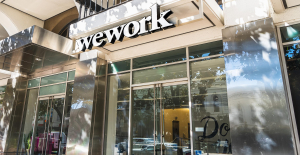The long-standing customer is rewarded for his loyalty. Anyone who believes in this will be disappointed with the internet contract. Because the conditions for new customers are usually simply better. The only way to do that is to change providers.
But what is important when it comes to a broadband connection at home? If you are looking for a new Internet provider for your home, you must first check availability. Consumers can do this on the websites of the respective providers. Urs Mansmann from the trade magazine "c't" recommends checking the availability of the providers with the largest networks, i.e. Telekom and Vodafone, to get an initial overview.
But which Internet technologies are there anyway? In Germany, DSL is most widespread, using the copper cables of the old telephone networks.
The bandwidth depends, among other things, on the DSL standard: With ADSL2 it is 16 megabits per second (Mbit/s) and can reach up to 250 Mbit/s with VDSL with super vectoring technology, says Mansmann. A Telekom map shows the DSL expansion.
Internet via TV cable is also widespread. Depending on the tariff, data rates of up to 1000 Mbit/s (1 gigabit) are possible. An advantage of the cable network: it is usually the cheapest. This is due to the fact that cable network operators and service providers are usually identical, explains Mansmann.
It's different with DSL, since the copper cable network usually belongs to Telekom. "If I book a DSL connection with Vodafone instead of a cable connection, then Vodafone has to pay rent to Telekom for using the telephone line and the DSL infrastructure, which drives up the price for the customer," says Mansmann.
Fiber optic connections are also often an option: "25 percent of households are now connected to the fiber optic network, and the number is expected to increase rapidly over the next few years," says Mansmann. Either only the building is connected to the fiber optic network (FTTB from "Fiber to the building") or the fiber optic line has been laid into the apartments (FTTH from "Fiber to the home").
If the fiber optics only reach the building, copper cable is used for the rest of the route to the connection in the apartment. The copper cable attenuates the signal. However, since the route is short, Mansmann says this has hardly any effect on the data rate.
Anyone who lives in the city almost always has at least one of the four options DSL, cable, fiber optics or mobile Internet available for use at home. That's not always the case in the country.
In such cases, you can assert your right to fast Internet access at the Federal Network Agency. In case of doubt, the authority then obliges a provider to implement a connection with at least 10 Mbit/s in download at the relevant location. The upload must be at least 1.7 MBit/s and the response time (latency) must not exceed 150 milliseconds.
There is no claim to a specific technique. And it can last more than a year.
If you don't want to wait, you still have satellite Internet as an option. Mansmann advises that it is best to choose a provider with near-earth satellites in low earth orbit (LEO). Because the much higher flying geostationary satellites only offer comparatively sluggish internet connections.
And how fast should the internet be at home? It depends on. "For single people, a connection with 50 Mbit/s is sufficient, a family of four gets by with 100 Mbit/s," says Mansmann. However, more bandwidth means more convenience.
In addition, consumers should note that the specified data rates are the maximum values, says Thomas Grund from Stiftung Warentest. He recommends taking a look at the product information sheet for the respective tariff: the provider must specify the maximum, minimum and usual data rate. To be on the safe side, it is best to use the minimum value as a guide and order a tariff with a few MBit/s more as a reserve, advises Grund.
And which Internet technology do you choose if you have a choice? Mansmann recommends asking your neighbors: "If they complain about problems with their connection, you should use a different connection technology if possible."
The best choice is fiber optic connections. They offer stable connections and high data rates at competitive prices. In addition to the major telco providers, regional providers also sell fiber optics, depending on the location. Mansmann advises that consumers should also check their offers.
Nothing speaks against resellers of broadband connections either. According to the specialist editor, some of their resale offers are cheaper than those of the network operators.
It is important to compare different tariffs carefully. Because the costs of the tariffs can be opaque at first glance. For example, when providers advertise a reduced price that only applies to the first few months.
As a rule, the price for a DSL, cable or fiber optic connection with 100 Mbit/s is around 40 euros per month. If you want a meaningful comparison, you should add up the monthly costs and possible payments for the change or for devices and deduct possible discounts.
The Bremen consumer advice center recommends concluding the new contract several weeks before the end of the notice period for the old contract. The new provider should be commissioned to terminate the old contract. In this way, the old and the new provider can take care of a seamless transition of the connection, including porting the number or numbers.
The new Telecommunications Act, which has been in force since December 2021, makes switching providers easier and safer for consumers. If there are problems during the change or afterwards, for example the Internet does not work or is slower than agreed, customers can request price reductions or submit a special notice.
In addition, the effects of a sweaty termination date for a contract are no longer so dramatic: consumers can terminate a contract that has been tacitly renewed after the minimum term has expired at any time with a notice period of one month.
"Everything on shares" is the daily stock exchange shot from the WELT business editorial team. Every morning from 7 a.m. with the financial journalists from WELT. For stock market experts and beginners. Subscribe to the podcast on Spotify, Apple Podcast, Amazon Music and Deezer. Or directly via RSS feed.

 What is chloropicrin, the chemical agent that Washington accuses Moscow of using in Ukraine?
What is chloropicrin, the chemical agent that Washington accuses Moscow of using in Ukraine? Poland, big winner of European enlargement
Poland, big winner of European enlargement In Israel, step-by-step negotiations for a ceasefire in the Gaza Strip
In Israel, step-by-step negotiations for a ceasefire in the Gaza Strip BBVA ADRs fall almost 2% on Wall Street
BBVA ADRs fall almost 2% on Wall Street Children born thanks to PMA do not have more cancers than others
Children born thanks to PMA do not have more cancers than others Breast cancer: less than one in two French women follow screening recommendations
Breast cancer: less than one in two French women follow screening recommendations “Dazzling” symptoms, 5,000 deaths per year, non-existent vaccine... What is Lassa fever, a case of which has been identified in Île-de-France?
“Dazzling” symptoms, 5,000 deaths per year, non-existent vaccine... What is Lassa fever, a case of which has been identified in Île-de-France? Sánchez cancels his agenda and considers resigning: "I need to stop and reflect"
Sánchez cancels his agenda and considers resigning: "I need to stop and reflect" “Amazon product tester”: the gendarmerie warns of this new kind of scam
“Amazon product tester”: the gendarmerie warns of this new kind of scam “Unjustified allegations”, “promotion of illicit products”… Half of the influencers controlled in 2023 caught by fraud repression
“Unjustified allegations”, “promotion of illicit products”… Half of the influencers controlled in 2023 caught by fraud repression Extension of the RER E: Gabriel Attal welcomes a “popular” ecology project
Extension of the RER E: Gabriel Attal welcomes a “popular” ecology project WeWork will close 8 of its 20 shared offices in France
WeWork will close 8 of its 20 shared offices in France “We were robbed of this dignity”: Paul Auster’s wife denounces the betrayal of a family friend
“We were robbed of this dignity”: Paul Auster’s wife denounces the betrayal of a family friend A masterclass for parents to fill in their gaps before Taylor Swift concerts
A masterclass for parents to fill in their gaps before Taylor Swift concerts Jean Reno publishes his first novel Emma on May 16
Jean Reno publishes his first novel Emma on May 16 Cannes Film Festival: Meryl Streep awarded an honorary Palme d’Or
Cannes Film Festival: Meryl Streep awarded an honorary Palme d’Or Omoda 7, another Chinese car that could be manufactured in Spain
Omoda 7, another Chinese car that could be manufactured in Spain BYD chooses CA Auto Bank as financial partner in Spain
BYD chooses CA Auto Bank as financial partner in Spain Tesla and Baidu sign key agreement to boost development of autonomous driving
Tesla and Baidu sign key agreement to boost development of autonomous driving Skoda Kodiaq 2024: a 'beast' plug-in hybrid SUV
Skoda Kodiaq 2024: a 'beast' plug-in hybrid SUV The home mortgage firm rises 3.8% in February and the average interest moderates to 3.33%
The home mortgage firm rises 3.8% in February and the average interest moderates to 3.33% This is how housing prices have changed in Spain in the last decade
This is how housing prices have changed in Spain in the last decade The home mortgage firm drops 10% in January and interest soars to 3.46%
The home mortgage firm drops 10% in January and interest soars to 3.46% The jewel of the Rocío de Nagüeles urbanization: a dream villa in Marbella
The jewel of the Rocío de Nagüeles urbanization: a dream villa in Marbella Europeans: a senior official on the National Rally list
Europeans: a senior official on the National Rally list Blockade of Sciences Po: the right denounces a “drift”, the government charges the rebels
Blockade of Sciences Po: the right denounces a “drift”, the government charges the rebels Even on a mission for NATO, the Charles-de-Gaulle remains under French control, Lecornu responds to Mélenchon
Even on a mission for NATO, the Charles-de-Gaulle remains under French control, Lecornu responds to Mélenchon “Deadly Europe”, “economic decline”, immigration… What to remember from Emmanuel Macron’s speech at the Sorbonne
“Deadly Europe”, “economic decline”, immigration… What to remember from Emmanuel Macron’s speech at the Sorbonne These French cities that will boycott the World Cup in Qatar
These French cities that will boycott the World Cup in Qatar Champions Cup: Toulouse with Flament and Kinghorn against Harlequins, Ramos replacing
Champions Cup: Toulouse with Flament and Kinghorn against Harlequins, Ramos replacing Tennis: still injured in the arm, Alcaraz withdraws from the Masters 1000 in Rome
Tennis: still injured in the arm, Alcaraz withdraws from the Masters 1000 in Rome Sailing: “Like a house that threatens to collapse”, Clarisse Crémer exhausted and in tears aboard her damaged boat
Sailing: “Like a house that threatens to collapse”, Clarisse Crémer exhausted and in tears aboard her damaged boat NBA: Patrick Beverley loses his temper and throws balls at Pacers fans
NBA: Patrick Beverley loses his temper and throws balls at Pacers fans


















